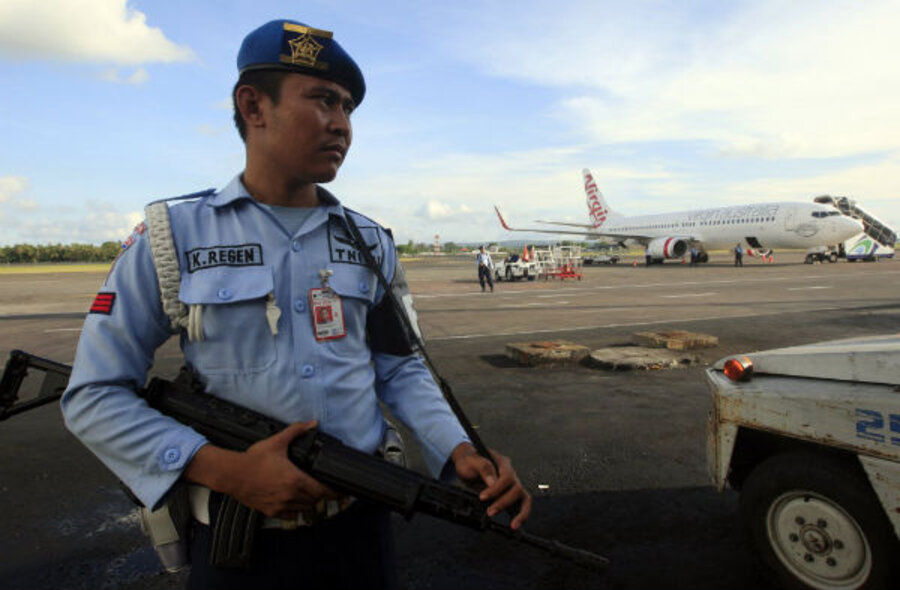Plane 'hijacking' false alarm a reminder of air security improvements – and gaps
A daily roundup of terrorism and security issues
News of a possible hijacking of an Australian passenger plane en route to Bali turned out to be a false alarm. The scare came after a passenger, reportedly intoxicated, attempted to gain access to the cockpit of a Virgin Australia airliner an hour before landing. A pilot reportedly issued a hijacking alert that was later understood as a miscommunication.
The incident comes at a time of heightened concerns about aviation security, but is also a reminder that serious in-air security threats have become far less frequent since 2001. Improvements in airport security and in-flight safety procedures have helped to cut down risks.
Still, two incidents this week – today's Virgin Australia emergency and the breach of the San Jose airport by a stowaway teenager – called attention to persistent security gaps. And while there has been no proof that the missing Malaysia Airlines flight was hijacked, the seven-week search has set some passengers and airline industry officials on edge.
Virgin Australia's Bali airport manager, Heru Sudjatmiko, told Australian television that the flight crew stopped the unruly Australian passenger, a 28-year-old man, from entering the cockpit. “He was then handcuffed and secured and placed at the back seat,” he said.
The plane, with 139 passengers on board, landed safely. “At no point was the safety of our passengers ever in question,” the airline said in a statement.
The scare, however minor, may fuel industry focus on preventative, anti-terrorism measures, as doubts are looming large that the disappearance of a Malaysia Airlines jet will ever be solved. The case has become what Peter Ford of the Christian Science Monitor called “one of aviation’s big mysteries,” with motives ranging from mechanical failure to a botched hijacking.
The Australia-Bali scare also comes just days after a 15-year-old boy sneaked onto the airfield of the international airport in San Jose, Calif., walked across the tarmac, and climbed into the wheel well of a Hawaiian Airlines jetliner. Despite long odds, he arrived in Hawaii hours later largely unscathed, but his daring laid bare obvious deficiencies in security.
“Despite the tens of billions of dollars that the United States has poured into airport security since the 9/11 attacks, a 15-year-old boy has revealed a gaping hole in the safeguards,” reported The Christian Science Monitor.
The Transportation Security Administration has spent $80 billion on aviation security since the agency was formed in the wake of the 9/11 hijackings. However, the TSA’s jurisdiction is inside airports, where officers are responsible for screening passengers and baggage. The exterior areas of the airport and perimeter security fall under the jurisdiction of local authorities.
Aviation security experts say the case in San Jose is, unfortunately, no anomaly. "What happened in San Jose can happen as we speak at other airports, because nobody can watch all these monitors,” Rafi Ron, former head of security at Israel's Tel Aviv airport, told the Associated Press






